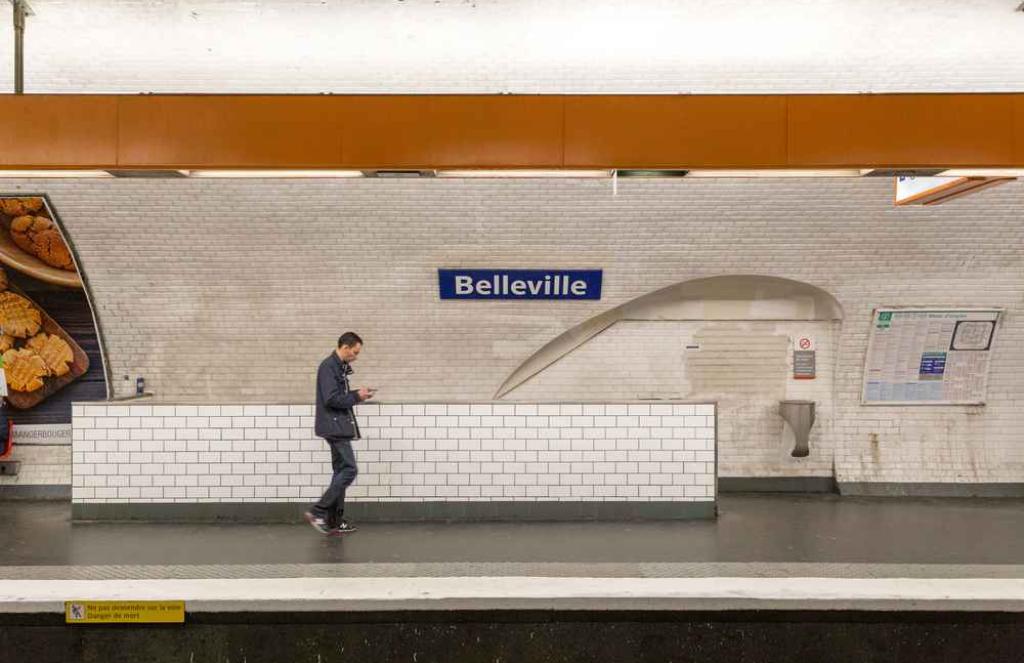Thessaloniki gets ready for its metro launch in November
The underground rapid transit lines have been under construction for almost two decades due to various project delays
 TheMayor.EU logo
TheMayor.EU logo 
The Belleville underground station in Paris is among those with the most polluted air, Source: Depositphotos
Ile-de-France Mobilités has released the first map of air quality on the subway and RER networks
Île-de-France Mobilités, the transport authority of the region including Paris and its surroundings, has released a map showing the air quality at 44 Metro and RER stations in the city. The map is the first of its kind and has two objectives: to transparently inform the public about the pollution situation in the public transit system of the French capital and to also help officials optimize their plan to implement a plan for the improvement of air quality in the most affected spots.
According to the map, the northeast section of the Paris Metro has the worst indicators when it comes to pollution with fine particle matter (FPM). At three of the stations there - Belleville, Jaurès and Oberkampf – the concentration of PM10 particles exceeded 480µg/m3, which is the maximum threshold recommended by the National Health Security Agency (ANSES) from one hour of exposure.
In case you’re wondering what generates the FPM pollution in the subway stations where trains run on electricity, the answer lies in the braking systems. Each braking session generates fine particles. Normally, these are supposed to be taken care of by an efficient fan system, however, the finding indicates that the fans at these stations need to be changed.
Better yet, however, the issue needs to be attacked at the source and in fact this is already being done thanks to the automatization of Paris Metro lines with new trains. In addition, by the end of 2034, Île-de-France Mobilités has asked the two operators (the Metro and RER) to experiment and develop new materials for braking systems to reduce carbon emissions. particles and which could be quickly deployed, in particular, new brake shoes and linings with lower particle emissions.
Among the other Paris subway stations studied, 31 display a “medium level” of concentration of fine PM10 particles, that is to say between 140 and 480µg/m3. The other ten - a “low level”, meaning less than 140 µg/m3.
You can consult the map here (in French).

The underground rapid transit lines have been under construction for almost two decades due to various project delays

Now you can get your wine in Talence by paying directly in Bitcoin

That’s because the state has to spend money on updating the railway infrastructure rather than subsidizing the cost of the popular pass

Rethinking renewable energy sources for the urban landscape

The examples, compiled by Beyond Fossil Fuels, can inform and inspire communities and entrepreneurs that still feel trepidation at the prospect of energy transition

Now you can get your wine in Talence by paying directly in Bitcoin

The 10th European Conference on Sustainable Cities and Towns (ESCT) sets the stage for stronger cooperation between the EU, national and local level to fast track Europe's transition to climate neutrality.

At least, that’s the promise made by the mayor of Paris, Anne Hidalgo

The underground rapid transit lines have been under construction for almost two decades due to various project delays

At least, that’s the promise made by the mayor of Paris, Anne Hidalgo

Hostal de Pinós is located in the geographical centre of the autonomous region

Despite its church-y name, the district has long been known as the hangout spot for the artsy crowds

Urban dwellers across the EU are having a say in making their surroundings friendlier to people and the environment.

Forests in the EU can help green the European construction industry and bolster a continent-wide push for architectural improvements.

Apply by 10 November and do your part for the transformation of European public spaces

An interview with the Mayor of a Polish city that seeks to reinvent itself

An interview with the newly elected ICLEI President and Mayor of Malmö

A conversation with the Mayor of Lisbon about the spirit and dimensions of innovation present in the Portuguese capital














